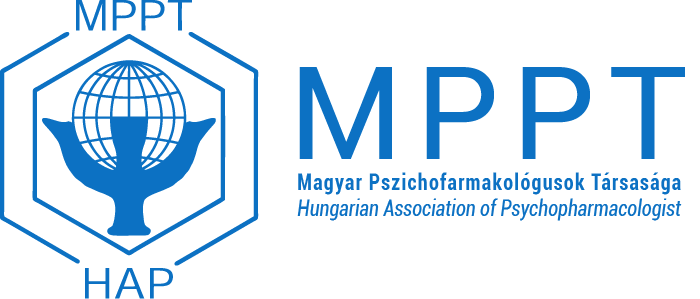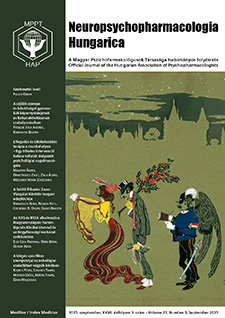Volume 27, Number 3, September 2025
Editoral in Hungarian
Faludi Gábor
The parental role in the mediation of their children’s digital device use and physical activity
Andrea Fógelné Jóga, Beatrix Koronczai
Abstract
Background: Research suggests that the use of digital devices correlates with children’s sleep duration and physical activity, and that parents’ behavior influences their children’s use of digital devices and sports activities. The relationship between parents’ mediation strategies and attitudes towards digital devices and their children’s use of digital devices is debated.
Method: A total of 132 parents of primary school students (91.7% female, average age 41.4, SD = 6.5) competed the questionnaire package. Of the evaluated children, 52.3% were boys, with an average age of 10.1 years (SD = 2.5).
Results: A significant correlation was found between sleep duration and digital device use among girls, as well as between parents’ and daughters’ digital device usage time. The frequency of parents’ sport activities was significantly correlated with that of their children. Parents who use multiple mediation strategies, as opposed to only active mediation, have a more negative attitude towards digital device use. There was a significant correlation between parents’ attitude towards smart devices and the time girls spent using digital devices.
Conclusion: Parents’ habits (regarding sports and digital devices) and attitudes towards smart device use may contribute to children’s health behaviors (especially for girls). However, there is no single mediation strategy that can clearly serve as a prevention regarding the time spent on digital devices.
Keywords: primary school children, digital device use, parental mediation, sleep, physical activity
Acceptance and Commitment Therapy delivered in the workplace – Effects of a 5-week-long intervention on company employees’ psychological flexibility
Ágnes Magyary, Zsolt Demetrovics, Ágnes Zsila, Noémi Zsuzsanna Mészáros
Abstract
Aim: A growing body of research has demonstrated the positive effects of Acceptance and Commitment Therapy (ACT) delivered in the workplace on employees’ well-being and psychological flexibility. Delivering ACT in the workplace aims to enhance employee performance and reduce stress levels by promoting psychological flexibility, a skill to consciously live in the present, observing thoughts and emotions, and engaging in value- driven actions. The short-term effects of a 5-week-long ACT-based psychological flexibility training program were tested.
Methods: A total of 21 corporate employees (62 % women, Mage = 43.9 years, SD = 9.5) from a large company in the financial sector completed study measures prior to and after the training sessions. The six core processes of psychological flexibility were examined. Psychological flexibility, Valued living, Thought suppression, and five facets of Mindfulness and Cognitive fusion were assessed.
Results: Results showed significant difference in one core process of psychological flexibility (Contact with the present moment). Moreover, Acting with awareness, Describe and Nonjudge showed significant difference before and after the training.
Conclusion: The present research has provided further empirical evidence for the effectiveness of ACT-based psychological flexibility training with regard to three aspects of Contact with the present moment, which is a core process of psychological flexibility (Acting with awareness, Describe, and Nonjudge). The findings provide a basis for future research to investigate longer-term effects, including monitoring how participants in the research program practice the learnt techniques in their everyday lives.
(Neuropsychopharmacol Hung 2025; 27(3): 157–168)
Keywords: Acceptance and Commitment Therapy, ACT, employee wellbeing, mindfulness, psychological flexibility
The Hungarian Adaptation of the Parent Eating Disorder Examination Questionnaire
Nóra Rábavölgyi, Kitti Németh, CatherineR. Drury, Brigitta Szabó
Abstract
Aim: It is recommended to consider multiple sources of information when assessing eating disorder symptoms in adolescents. The Parent Eating Disorder Examination Questionnaire (PEDE-Q) measures the parent-reported eating disorder symptoms of adolescents. The aim of the present study was to validate the Hungarian version of the PEDE-Q in a community- based Hungarian sample. Our further aim was to examine the relationship between the questionnaire and adolescents’ self-reported eating disorder symptoms, as well as parents’ own eating attitudes.
Method: 201 parents aged between 32 and 68 years (155 mothers) completed the PEDE-Q and the Eating Attitudes Test-26. Additionally, 195 adolescents aged between 12 and 18 years (55.7% girls) completed the self-administered Psychiatric Scales for Children and Adolescents – Psychogenic Eating Scale. We conducted confirmatory factor analyses to examine the factor structure of the Hungarian PEDE-Q. For further bivariate analyses, we used Pearson correlations.
Results: After adding modification indices, the revised hierarchical model, where the three first-order factors (Restraint, Eating Concern, and Shape/Weight Concern) loaded onto a second-order general eating disorder factor, showed acceptable properties (CFI = 1.000, TLI = 0.999, RMSEA = 0.031 [90% CI: 0.017–0.042], SRMR = 0.084; α = 0.83–0.94). A
moderate positive correlation was found between the self-reported and the parent-reported adolescent eating disorder symptoms. The results also showed a weak positive correlation between the parent-reported adolescent symptoms and the parents’ own symptoms.
Conclusion: The Hungarian Parent Eating Disorder Examination Questionnaire is a valid and reliable measure of parent-reported eating disorder symptoms of adolescents. The association between adolescent and parental reports highlights the importance of multi- informant assessments in identifying eating disorder symptoms in youth.
(Neuropsychopharmacol Hung 2025; 27(3): 169–184)
Keywords: eating, eating attitudes, eating disorders, adolescent
The Implementation of ASQ and BSSA in Hungary: A Three-Step Clinical Pathway to Reduce Suicide Risk
Lívia Priyanka Elek, Márk Bérdi, Xénia Gonda
Abstract
Suicide rates in Hungary remain alarmingly high, particularly among middle-aged and older men. This study introduces the Hungarian adaptations of two suicide prevention tools: the Ask Suicide-Screening Questions (ASQ) and the Brief Suicide Safety Assessment (BSSA), examining their applicability within a three-step clinical pathway consisting of screening, risk stratification, and treatment planning. The authors present a detailed overview of the hierarchy of suicide risk factors and emphasize the critical role of both screening and risk assessment in clinical decision-making. A dedicated section of the study explores various psychosocial interventions that have been proven effective in preventing suicide attempts. These include immediate stabilizing interventions and longer-term, more complex psychotherapeutic treatment approaches, all of which aim to provide structured support for individuals at risk.
Keywords: suicide prevention, ASQ, BSSA, clinical pathway, suicide risk, psychosocial interventions, screening, mental health
Specific Aspects of Burnout Among Oncology Care Providers
Péter Kovács, Tamás Szekeres, Dóra Horváth, Tamás Mátrai, Magdolna Dank
Abstract
Introduction: Burnout is a complex, process-oriented phenomenon with long-term negative consequences, which tends to recur regularly in helping professions. The identification of psychological risk factors leading to burnout, as well as the protective factors that may mitigate its development, is essential for effective prevention and targeted workforce support. This task is particularly pressing in emotionally demanding fields such as oncology, where professional work not only entails heightened emotional vulnerability but also presents specific intervention-related challenges.
Objective: The aim of this study is to explore the characteristics and specific risk factors of burnout among professionals working in oncology care, and to identify protective factors that may contribute to the prevention and alleviation of burnout.
Method: Based on a review of relevant literature, the study examines the individual- and organizational-level challenges that are observable in everyday oncological practice, in relation to potential interventions and preventive strategies. Results: Professionals involved in oncology care are exposed to increased and domain-specific emotional burdens that adversely affect their mental health, reduce performance, and negatively impact the quality of patient care. The analysis highlights the critical role of individual resilience, the monitoring of well-being, and the importance of institutional-level intervention strategies.
Discussion: Preventing burnout requires integrated, multi-level interventions that take into account both individual resources and the institutional culture. Strengthening protective factors is essential for sustaining long-term psychological well-being. Effective prevention necessitates regular monitoring of burnout and well-being, the development of individual coping capacities, and the cultivation of a supportive organizational climate.
Conclusion: Burnout among oncology professionals constitutes not only an individual but also a systemic challenge. Supporting colleagues experiencing exhaustion must be considered a fundamental workplace condition. The foundation of prevention lies in the implementation of a robust psychological support system, institutional accountability, and the targeted promotion of staff well-being.
(Neuropsychopharmacol Hung 2025; 27(3): 208–220)
Keywords: burnout, oncology, prevention



